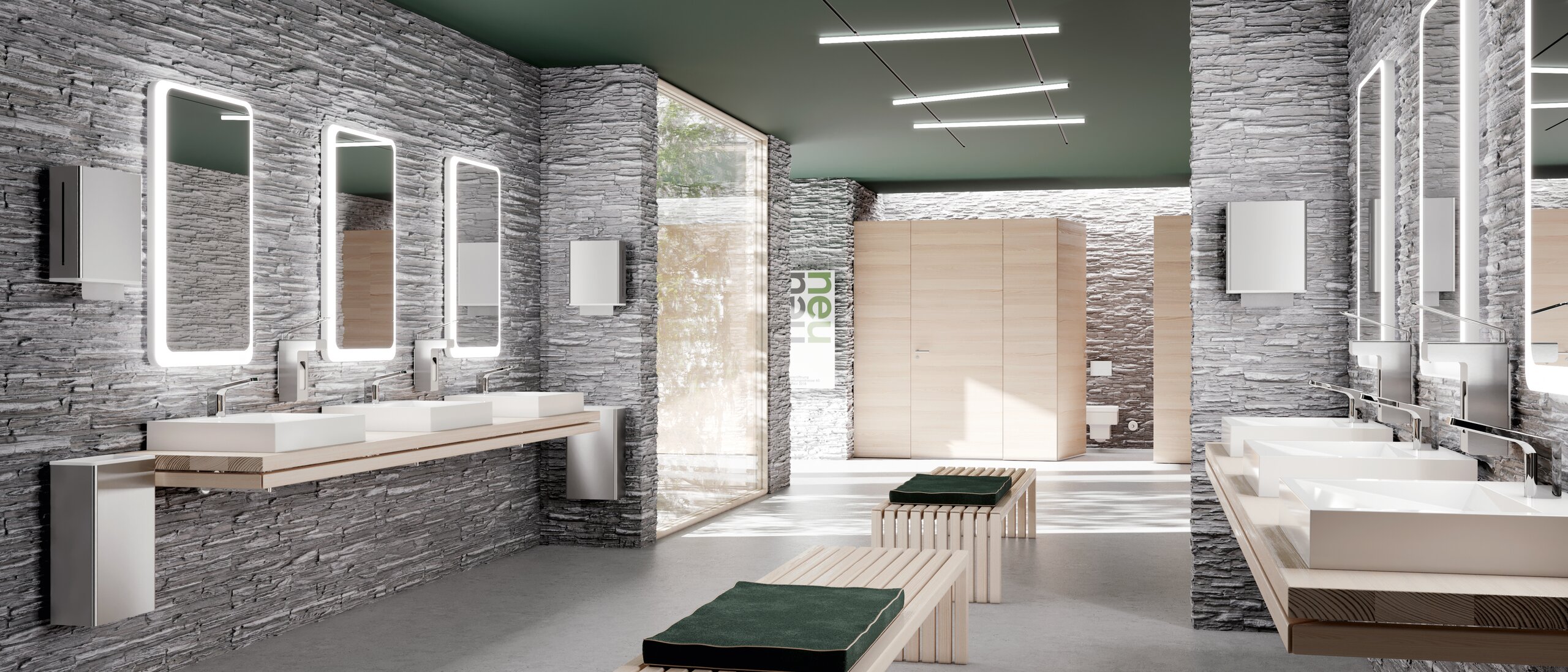HEWI MAG / NEWS
7 examples of hygiene concepts in different areas
The Corona pandemic has alerted everyone to an unprecedented degree, and especially architects, planners and sanitary installers to the topic of hygiene, because good hygiene is protection against infection. Here we show you seven examples of hygiene concepts in which hygiene on the one hand, and design on the other, are not mutually exclusive. Discover our functional and aesthetic solutions for more hygiene in various application areas.
Disinfection dispensers in entrance areas of public buildings are a conspicuous expression of increased hygiene requirements. However, special attention should also be paid to door handles, hands free fittings, washrooms and sanitary rooms, patient rooms in hospitals and the large subject of kindergartens and schools as further areas of hygiene.
Highly frequented rooms that are subject to special hygiene requirements, also include all other types of public buildings, like institutions, offices, health and shopping centres and sports facilities.
7 Examples of hygiene concepts in different areas of application
- Entrance Areas
- Doors
- Taps and washbasins
- Washrooms
- Public sanitary rooms
- Patient bathrooms
- Kindergartens and schools
1. hand disinfection in entrance areas
Whether in shops, doctors' surgeries, companies, institutions or hotels, disinfectant dispensers in the entrance area have become an expected and necessary standard since the Corona pandemic. HEWI offers mobile disinfectant dispensers that can be used without touching them and which meet the requirements of busy entrance areas in particular.
HEWI disinfectant dispensers come in a variety of designs made of stainless steel or powder coated, or with a deep matt surface in white, grey tones or black and blend extremely well into elegant interiors.
More on the topic HAND DISINFECTION IN ENTRANCE AREAS
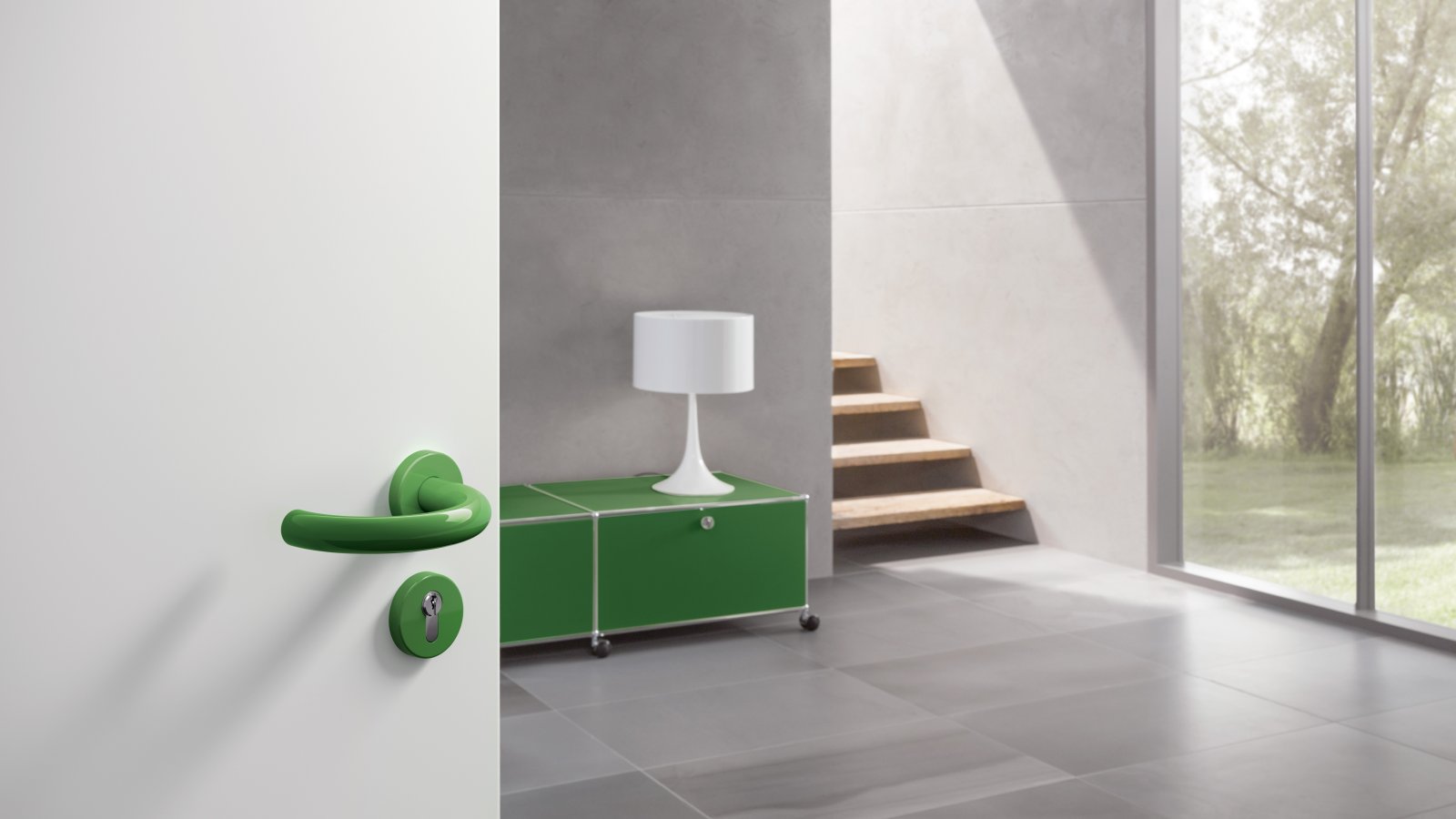
2. Hygiene at the door
Door handles can be hotbeds of viral and bacterial transfer. When people use a door handle after sneezing or coughing into their hand, potentially infectious germs can be transferred to others. This is particularly relevant in areas where many people meet, such as offices, healthcare facilities, shopping centres and sports venues.
HEWI have developed an innovative solution for active infection protection: the HEWI door handle 115, which opens doors without touching them. The cleverly thought-out, ergonomic design intuitively invites use with the elbow. Of course, the door handle can also be operated by hand. And in order to effectively protect against infections as much as possible, the active+ version of door handle 115 has an antimicrobial surface.
More on the subject of hygiene at the door
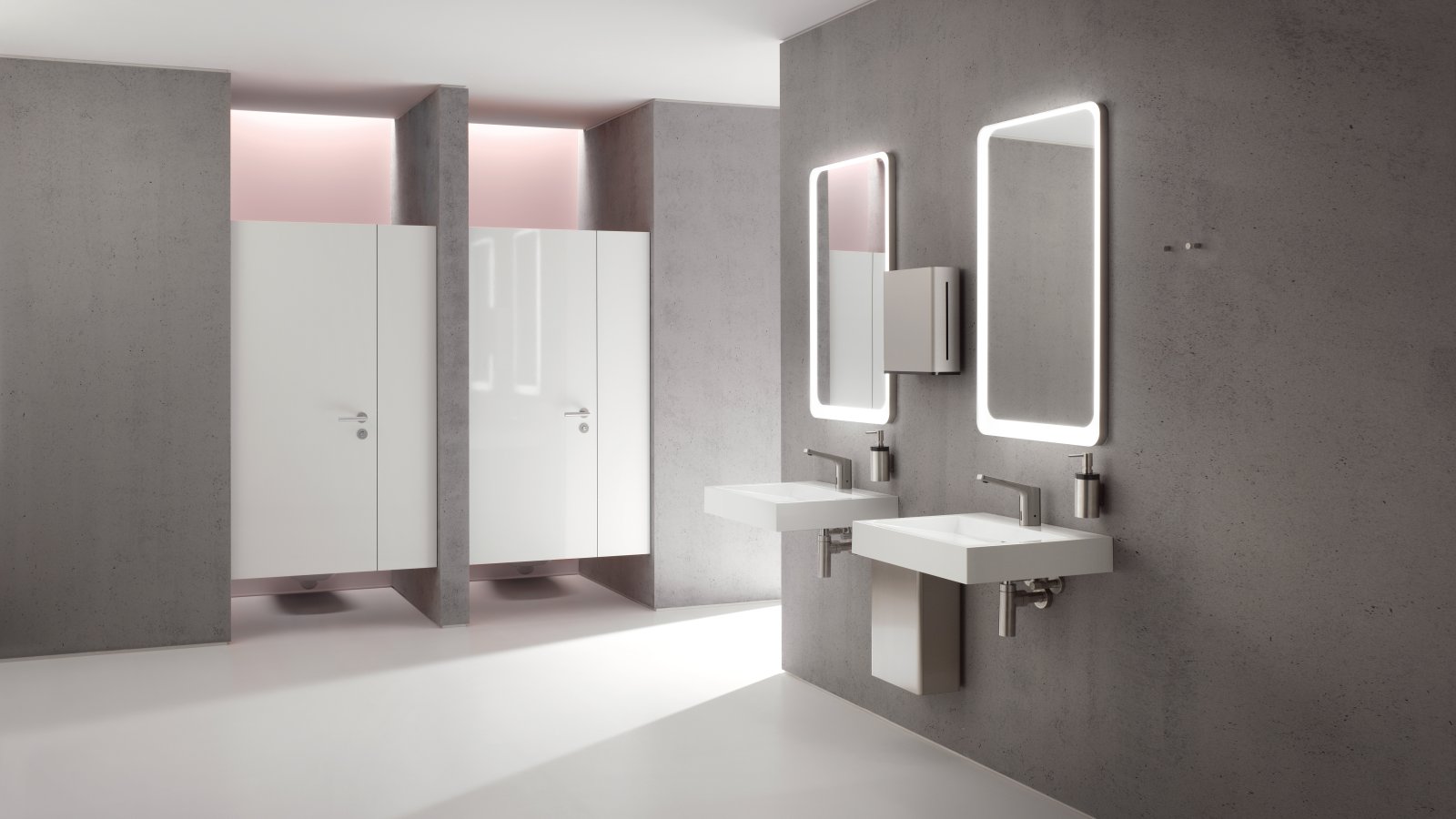
3. Touch free taps
Hand washing as a simple but highly effective hygiene measure has increased in importance in the wake of the Corona pandemic. This has also been reflected in increased water consumption. With the help of touch free taps, use of this valuable resource can be significantly reduced.
However, touch free taps with intelligent sensor technology not only save water in public buildings, but also increase the standard of hygiene. Because the taps are not touched, no germs can remain that the next user might pick up.
Moreover, automatic hygiene flushes prevent germs from settling inside the taps. These hygiene flushes can be controlled via an app. They increase hygiene and reduce cleaning effort.
The preset water temperature of 30-36 °C can be changed individually and can be adapted to the respective user needs.
More on the topic of hygiene through touch free fittings
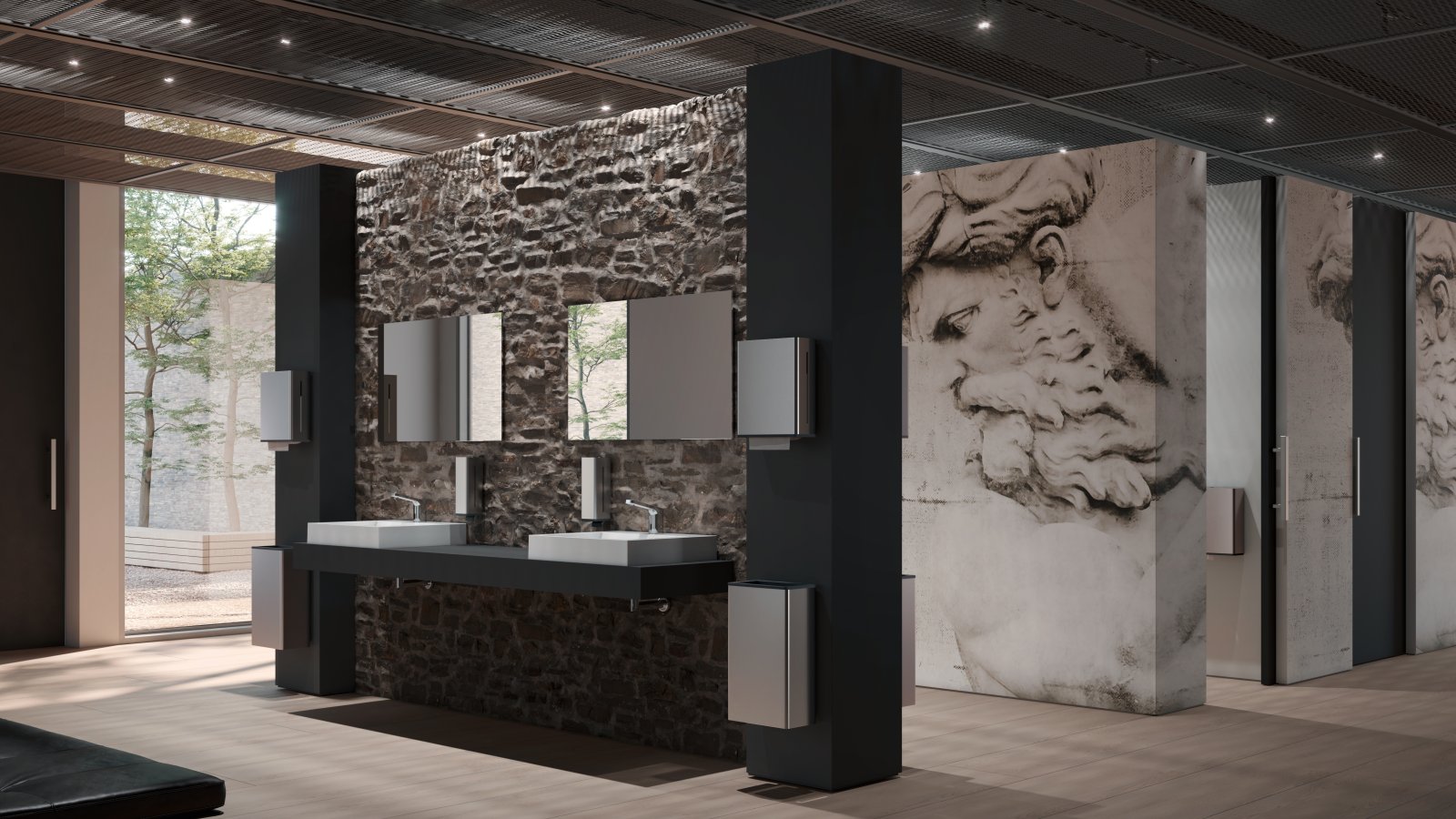
4. Hygiene in washrooms
Washrooms are an area of hygiene and should themselves be as hygienic as possible. By cleverly equipping busy washrooms in public buildings they can effectively contribute to greater hygiene and infection control.
Studies have shown, for example, that paper towel dispensers significantly improve hygiene in washrooms compared to hand drying fans. Touch free dispenser systems with waste bins and hygiene combinations in various sizes, can be easily integrated into washrooms with high demands on design and aesthetics.
Our versatile range of dispenser systems includes different versions, for example, made from polyamide, antimicrobial polyamide, models with powder coating in black, grey tones and white as well as stainless steel variants.
More on the subject of hygiene in the washroom
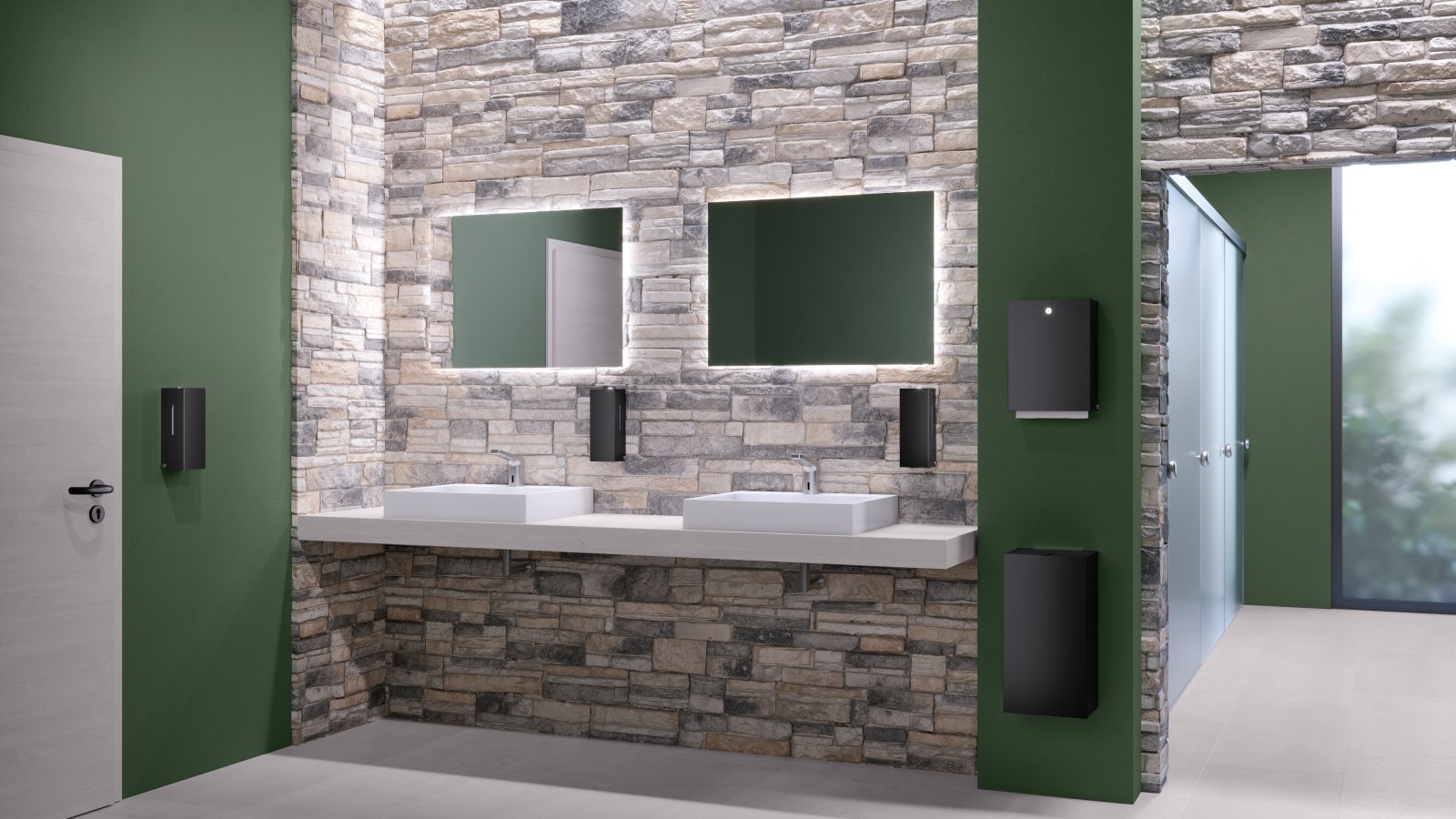
5. Hygiene in public sanitary facilities
The Corona pandemic is changing the way public sanitary spaces are designed and equipped. Standards, trends and quality are no longer the only decisive factors. The sanitary room of the future must always take infection control into account.
HEWI have solutions that meet all these requirements. Touch free taps, soap and disinfectant dispensers effectively reduce the risk of infection. Paper towel dispensers reduce the germ load compared to hand drying fans.
Products where contact cannot be avoided can offer antimicrobial protection with integrated microsilver in the active+ variant. Door handles from the System 115 are designed to be opened using an elbow, effectively reducing the risk of smear infection.
More on the subject of hygiene in public sanitary rooms
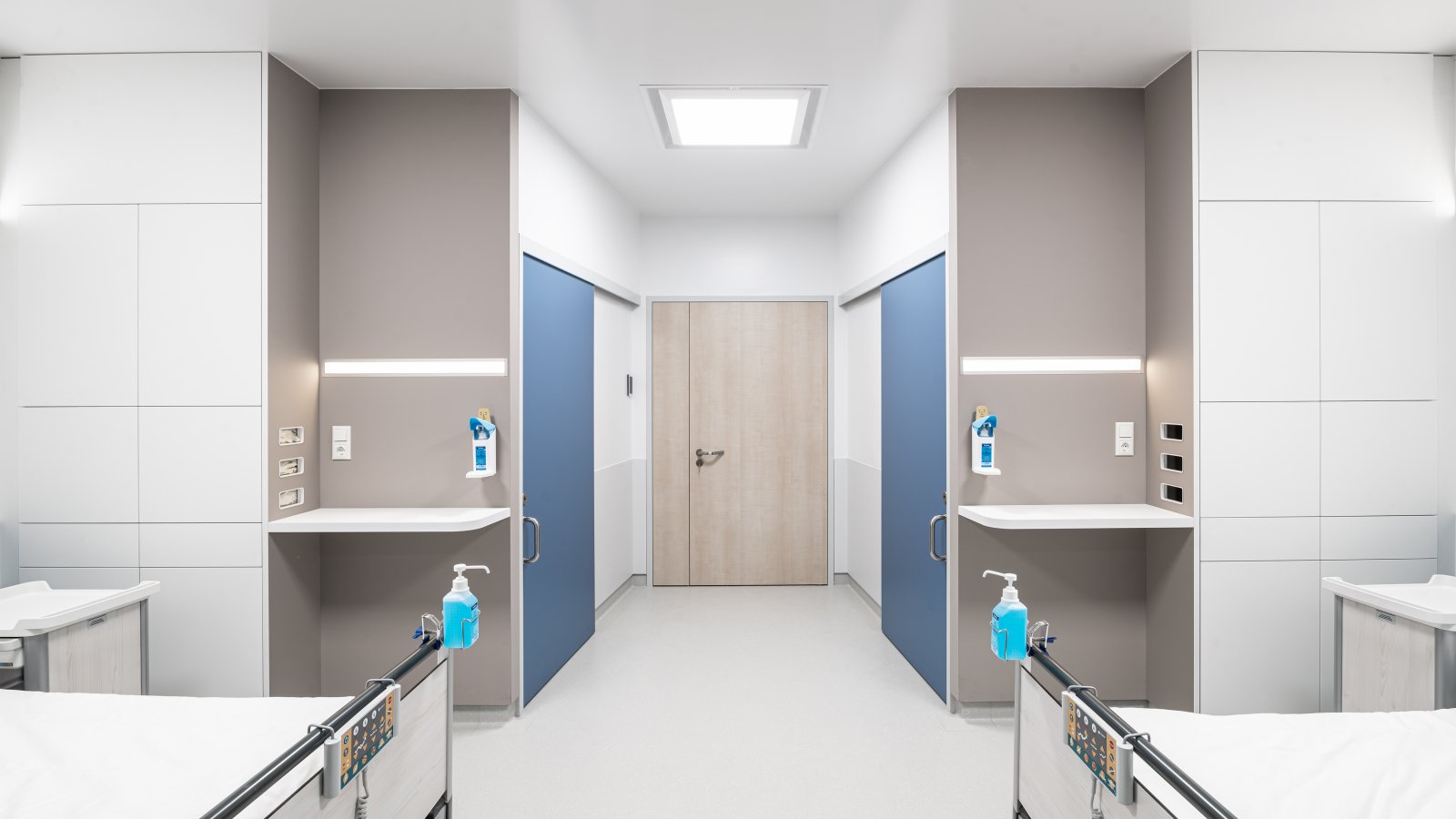
6. How the design of patient rooms increases hygiene
Architects, molecular biologists and physicians have jointly researched how the design of patient rooms increases infection protection. In a demonstration, research teams incorporated the results of their investigations and created an excellent example of an optimum hygiene concept.
The researchers found out that, even with good cleaning intervals, handrails, door handles and sanitary facilities, are especially good breeding grounds for pathogens. This can be counteracted with high-quality materials, hygienic processing techniques and innovative functions.
That’s why HEWI solutions have as few connecting and joining points as possible. This reduces the accumulation of dirt and water. Washbasins have a surge edge that prevents water from accumulating on the silicone joint to the wall.
Product surfaces with as few joints as possible facilitate cleaning and increase hygiene. For example, the flush release and function button of the folding support rail are flush-mounted. The components are joined in such a way that the surface is as smooth and hygienic as possible.
For components such as the WC brush set and the WC paper holder, stainless steel with its non-porous and particularly hygienic surface has proven its value.
More on the topic of hygiene in patient rooms

7. Hygiene in kindergartens and schools
Sanitary solutions for kindergartens and schools are exposed to particular stresses and must therefore be especially robust. If possible, they should be designed to be cheerful and child-friendly. The Corona pandemic has also drawn attention to the fact that there is a great need to catch up in many places in terms of hygiene and infection protection.
The HEWI series active+ increases hygiene without anyone noticing. Due to this antimicrobial surface, the number of bacteria, viruses and other germs and the risk of passing on pathogens is significantly reduced.
More on the topic of hygiene in kindergartens and schools
Discover 4 appropriate equipment examples for kindergartens and schools
Stay up to date
Stay informed and discover more examples of hygiene concepts in our regular newsletter
